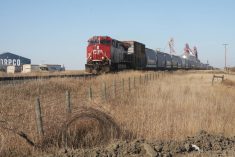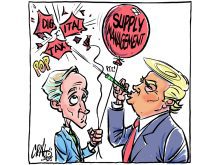ACCURATE and detailed cattle records might arguably be the most important tool in any North American ranch or dairy operation.
Any doubts about the value of livestock record-keeping have surely been dispelled by recent events surrounding the traceout of cattle with BSE. Cattle identification tags and other tracking measures allowed the Canadian Food Inspection Agency to trace the origins and herd mates of the Alberta cow diagnosed in May with BSE.
In December, the impeccable dairy herd records kept by Wayne and Shirley Forsberg allowed the trace of a BSE-infected cow found in a Washington state dairy and slaughter facility.
Read Also

Agriculture needs to prepare for government spending cuts
As government makes necessary cuts to spending, what can be reduced or restructured in the budgets for agriculture?
By contrast, traceout of the latter cow’s herd mates in the United States is still inconclusive nearly a month after discovery of the Washington case. There are still many cows whose origins the U.S. Department of Agriculture are trying to trace and there is some doubt whether the USDA will be able to definitively conclude its investigation like the CFIA did with the May case.
Inadequacies in the U.S. identification system are well-known in the American cattle industry. At the National Cattlemen’s Beef Association meeting in February 2003, cattle health committee chair Gary Wilson publicly noted America’s inability to track animals in the event of a serious disease outbreak. Work was under way to develop a national plan, with a potential implementation date in 2006.
Recent events may induce more speed, but progress has been slow, notes Steve Kay, editor and publisher of the U.S.-based Cattle Buyers Weekly.
“Lack of identification is a big issue,” he told producers at the Agri-Future 2004 conference in Fairview, Alta., earlier this month. “We don’t have the identification systems in place you do.
“The Canadian case was a huge wakeup call for all of us south of the border. We are significantly under-prepared in our ability to trace cattle.”
Canadian producers and Canadian systems proved their superiority during the BSE crisis. Consumers and international buyers have also recognized that superiority through their buying activity. Even some Americans recognize it.
Yet the integration of the cattle industry and the realization that the cattle business is North American in scope should prevent us from taking too much satisfaction in this success.
Truth be told, Canada’s system would probably have been better if cattle industry lobbyists hadn’t taken a go-slow approach as they waited for the U.S. to improve its own tracking systems to maintain closer industry standards.
Now it’s a waiting game. Canadian producers can best play that game by keeping comprehensive records and understanding that the independence of ranchers must give some ground to the modern recognition of international farmer-consumer interdependence.
















